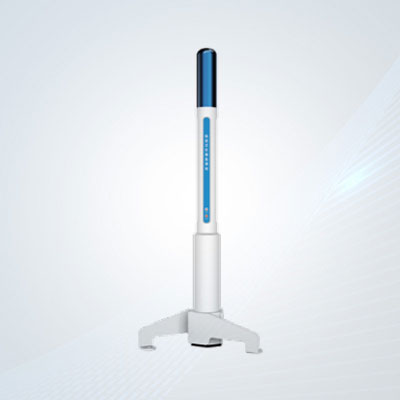Working Principle, Technical Indicators, and Development Trends of Radiation Detectors
A radiation detector is a key instrument for detecting and measuring ionizing radiation in the fields of nuclear science and industry. Its core function is to convert radiation energy into electrical signals that can be quantitatively analyzed. Modern detectors play an irreplaceable role in fields such as nuclear safety monitoring, environmental assessment, and medical diagnosis. The technological evolution of detectors has always revolved around detection accuracy, environmental adaptability, and multi - scenario applications.
Analysis of Core Performance Indicators
1. Detection Efficiency: It refers to the ratio of the number of particles actually recorded by the detector to the total number of incident particles in the same period. This indicator is affected by multiple factors such as geometric conditions (e.g., the solid angle of the sensitive area), material attenuation (material shielding effect), interaction probability (probability of reaction between rays and the medium), and recording efficiency (signal threshold setting). For example, for high - energy particles, the penetration loss of the detector shell needs to be considered, while low - energy particles are more susceptible to environmental noise interference.
2. Resolution: It is divided into three categories:
- Energy Resolution: It measures the detector's ability to distinguish particles of different energies and is usually represented by the full - width at half - maximum (FWHM). For example, the resolution of a high - purity germanium detector for an energy peak of 1.33 MeV can reach an extremely narrow value.
- Spatial Resolution: It reflects the accuracy of the detector in locating the radiation source and is particularly important in medical imaging and nuclear material tracking.
- Time Resolution: It is used to distinguish rapidly and continuously incident particles and is crucial in high - count - rate scenarios.
3. Linear Response: It characterizes the linear relationship between the output signal and the energy or intensity of the incident particles, ensuring the stability of measurement results under different radiation intensities.
4. Particle Discrimination Ability: The detector is required to have a selective response to different radiation particles such as α, β, and γ rays. For example, precise classification can be achieved through energy spectrum analysis.
Technological Innovation and Material Breakthroughs
In recent years, new detector materials such as the CsPbBr3 crystal have attracted wide attention. Compared with traditional CdZnTe (CZT), this material is not only low - cost and has a simplified processing technology but also has excellent γ - ray tolerance, making it suitable for long - term monitoring in extreme radiation environments. In addition, semiconductor detectors (such as high - purity germanium) are used for the analysis of low - activity samples due to their high energy resolution. Their actual detection efficiency can be optimized through geometric modeling and three - dimensional calculation, greatly reducing the dependence on radioactive sources.
Application Expansion and Intelligent Upgrading
Modern radiation detectors have gone beyond the traditional field of nuclear science and entered interdisciplinary fields such as industrial non - destructive testing, astrophysical research, and archaeological analysis. The integration of imaging functions has further expanded the application scenarios. For example, neutron radiography technology can be used to detect internal defects in materials, and γ - ray energy spectrum imaging supports the precise positioning of nuclear waste.
Future Development Trends
1. Multi - parameter Detection: Develop combined detectors to simultaneously acquire information such as particle energy, position, and time, enhancing the multi - dimensional data analysis ability.
2. Microelectronics Integration: Use integrated circuits and algorithms to optimize the signal processing speed and promote the miniaturization and low - power design of detectors.
3. Exploration of Superconducting Technology: Research new superconducting media to break through the sensitivity and response limits of existing materials.
4. Passive Calibration Technology: Replace traditional radioactive source calibration with software modeling to reduce operational risks and costs. For example, the Monte Carlo method can be used to simulate the detection efficiency of complex geometric bodies.
China has systematically carried out research on
radiation detectors since the 1950s, achieving independent research and development of core components such as scintillators and semiconductors and forming a complete technical system in the field of nuclear energy safety. With the increasing global demand for radiation monitoring, detectors with higher performance and stronger environmental adaptability will continue to drive industry innovation.




